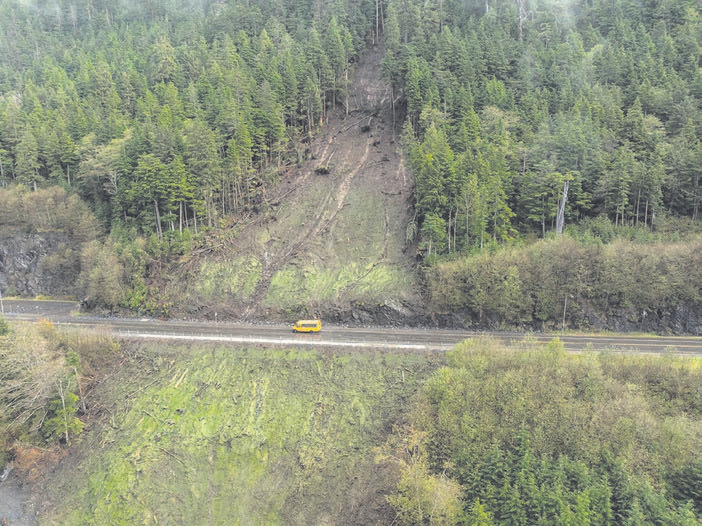
By Austyn Gaffney
Last week, a storm featuring heavy rainfall, snow, and strong winds created perilous conditions in the Pacific Northwest. By last Friday, Northern California faced the possibility of receiving up to 16 inches of rain.
This storm is characterized as an atmospheric river, a long, slender channel filled with moisture that collides with the mountainous regions of the West Coast, resulting in substantial rainfall.
Scientists have yet to determine if the frequency of atmospheric rivers is rising due to climate change; however, a warmer atmosphere, influenced by fossil fuel combustion, can retain more moisture, potentially leading to more extreme rainfall events. Experts assert that this increase in extreme rainfall has likely resulted in a higher incidence of landslides.
Rapid landslides known as debris flows, comprising torrents of mud and rocks, are more prevalent in areas that have recently undergone severe burning, as seen in wildfire-impacted regions. The Park fire in July, California’s fourth-largest wildfire, occurred in an area forecasted to receive up to 12 inches of rain, remaining under a flood watch until Saturday morning as per the National Weather Service.
To date, around a dozen minor landslides, including one that caused a vehicular accident, have been reported in Northern California.
What triggers a landslide?
Landslides happen when a large mass of earth, along with trees, rocks, and vegetation on top, becomes dislodged from a slope and falls. Various natural factors can trigger landslides, including earthquakes, melting permafrost, rapid snowmelt, or glaciers retreating. Human activities, such as deforestation and construction, can also instigate them. However, scientists concur that rainfall is the primary driver.
Research on landslides and climate change is still relatively young and less definitive compared to studies linking climate change with phenomena like wildfires or hurricanes. Nevertheless, experts like Dave Petley, who compiles global landslide data for the American Geophysical Union, assert that climate change is undeniably contributing to the rising prevalence of landslides.
As of now, 2024 has set records for landslide occurrences, Petley noted. By October’s close, 679 landslides had resulted in 4,460 fatalities worldwide.
New information from the U.S. Geological Survey indicates that 44% of the U.S. faces landslide risk, particularly elevated in mountainous regions with steep slopes and narrow valleys, especially within the Appalachian Mountains, Rocky Mountains, the Pacific Coast, and certain areas of Alaska, Hawaii, and Puerto Rico.
Recent extreme rainfall has underscored these dangers. Following the floods in Eastern Kentucky in 2022, over 1,000 landslides and debris flows were recorded. After Hurricane Helene, more than 2,000 landslides were initiated by the storm, with at least half causing damage to rivers, roads, and infrastructure, including homes and businesses. In Southeast Alaska, four landslides have resulted in the deaths of a dozen individuals over the past ten years.
How can I stay safe?
Landslides present particularly complex hazards. Some may progress slowly over days or weeks, while others can occur suddenly, often more quickly than a person can run, as noted by the USGS.
The USGS suggests monitoring for the following signs:
— Unusual noises such as cracking trees or creaking ground. Some individuals have likened the noise to a roaring train or the screech of an engine.
— Ground vibrations similar to those produced by an earthquake. A landslide survivor described the feeling as if a giant mole was burrowing beneath her home.
— Sudden shifts in stream levels during or post-storm, or water cascading down a slope. Be observant of any changes in water color. If usually clear water flowing down your hill suddenly turns brown, muddy, or filled with debris, it might indicate a landslide. Additionally, look for new cracks or changes in the ground, roads, or the sides of buildings.
— If you live in a landslide-prone area, prepare similarly to how you would for earthquakes, wildfires, or floods. Keep a fully charged phone and an emergency go-bag stocked with essentials like medication, water, and necessary supplies.
— If you are in a structure affected by a landslide, wait until the movement ceases before evacuating. Instead, seek refuge on a higher level or on a countertop.
Does insurance cover landslide damage?
Standard homeowners’ insurance typically excludes coverage for earth movements such as landslides or earthquakes, and unlike flood insurance, separate landslide coverage is not available through federal programs.
One way to secure coverage is via a separate item known as difference-in-conditions insurance. This type of insurance could cost as much as $15,000 per year, according to a report from RAND Corp., and finding quotes can be notoriously challenging, especially after a community has already experienced a landslide.
Experts indicate that the lack of available insurance is primarily because the risk is so unpredictable and the number of individuals seeking such coverage is relatively small.
